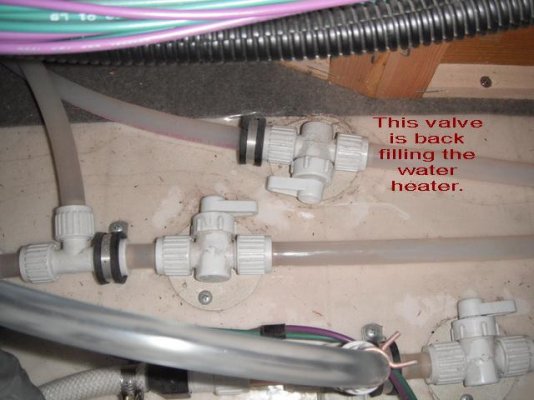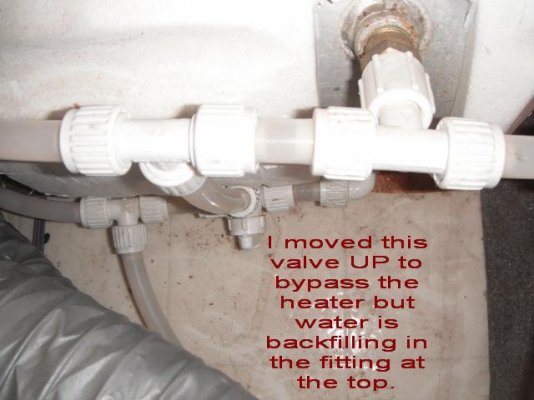johnny340
Member
I have a '99 Itasca Spirit and started what I thought would be a simple job of winterizing.
After draining the water tank and water heater I hooked up the anitfreeze line and opened that valve. It seems that is about the only valve that's easy to know if it's open or closed. I have lost track of the other inline valves and seem to dump antifreeze overboard no mater which way they are turned. Is there a simple rule for these? I know the tank drain orientation but there are two other inline drains that send water to the heater that I don't know what they are for. Yes, i did change the heater bypass valve (the only other easy one to see which way is open) but still end up with antifreeze back into the heater. Frustrating. Here is the easy to read schematic for this thing: Oh, the attachment is too large... It's the inline valve that you would think allows flow in one direction and sends overboard at 90? but the overboard setting is the 'other' direction inline with the hose.
Oh, the attachment is too large... It's the inline valve that you would think allows flow in one direction and sends overboard at 90? but the overboard setting is the 'other' direction inline with the hose.
Here's a link to the schematic if it helps:
http://www.winnebagoind.com/diagram/1999/99_324v_plumb.pdf
I can't even insert a link today....
edit: link fixed by moderator
After draining the water tank and water heater I hooked up the anitfreeze line and opened that valve. It seems that is about the only valve that's easy to know if it's open or closed. I have lost track of the other inline valves and seem to dump antifreeze overboard no mater which way they are turned. Is there a simple rule for these? I know the tank drain orientation but there are two other inline drains that send water to the heater that I don't know what they are for. Yes, i did change the heater bypass valve (the only other easy one to see which way is open) but still end up with antifreeze back into the heater. Frustrating. Here is the easy to read schematic for this thing:
Here's a link to the schematic if it helps:
http://www.winnebagoind.com/diagram/1999/99_324v_plumb.pdf
I can't even insert a link today....
edit: link fixed by moderator


